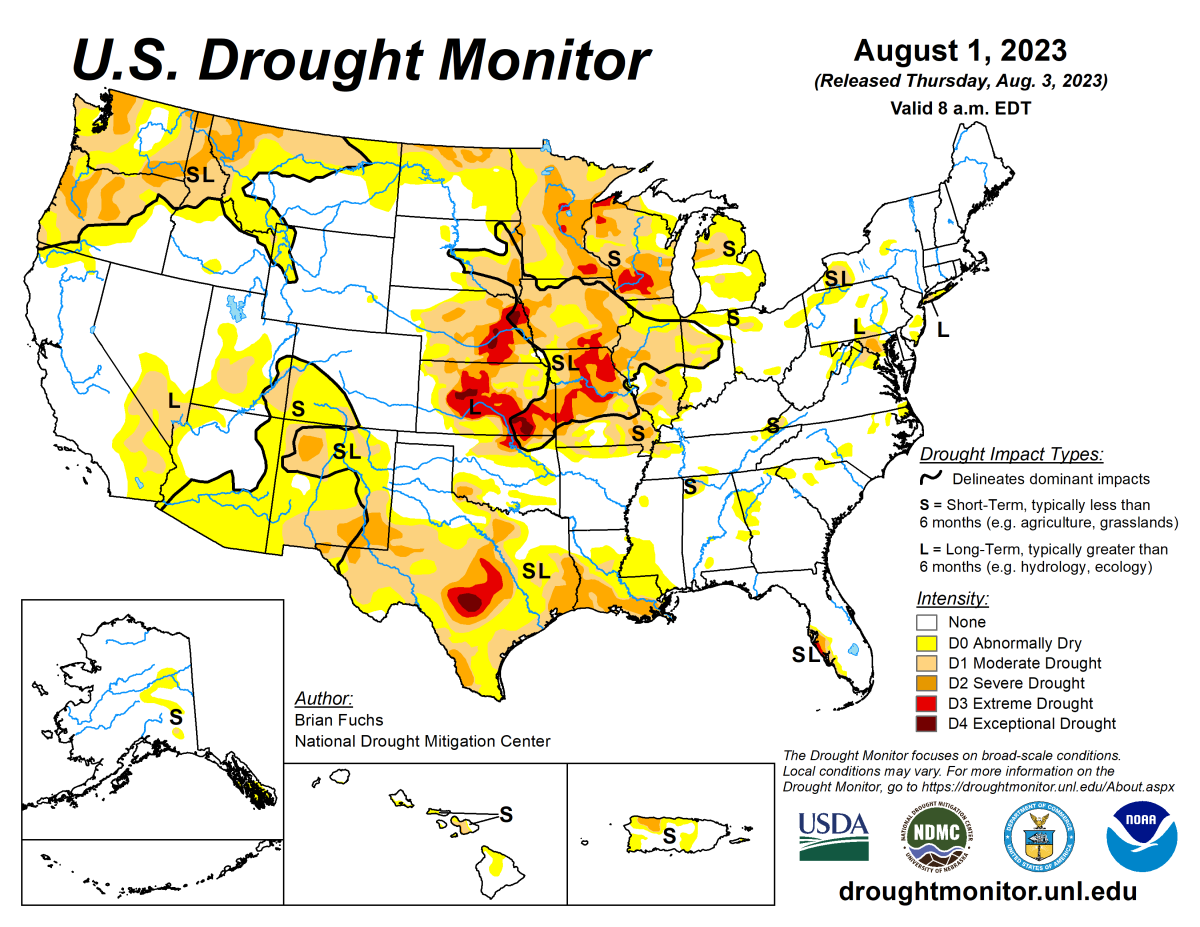
According to the August 1, 2023 U.S. Drought Monitor, moderate to exceptional drought covers 23.5% of the United States including Puerto Rico, an increase from last week’s 22.7%. The worst drought categories (extreme to exceptional drought) decreased slightly from 2.2% last week to 2.1%.
A strong ridge of high pressure continued to dominate the upper-level circulation across the contiguous U.S. during this U.S. Drought Monitor week (July 26-August 1). The ridge was anchored over the south-central U.S. but extended northward into southern Canada, with lobes of the ridge extending into western Canada and Alaska. It was part of a subtropical ridge system that extended eastward across the Caribbean and North Atlantic, and westward into the North Pacific.
Warmer- and drier-than-normal weather was associated with the ridge over the contiguous U.S., Hawaii, the U.S. Virgin Islands, and much of Puerto Rico and Alaska. More than 500 daily high temperature records were set across the contiguous U.S. this week; only the Pacific Northwest and a few spots in the Great Lakes and Southeast were cooler than normal. The ridge forced the jet stream into southern Canada, with Pacific weather systems brushing the Pacific Northwest then tracking through the Canadian Prairies and into the Great Lakes and Northeast.
Fronts associated with the weather systems brought areas of above-normal precipitation to the central and northern Plains, Great Lakes, Northeast, and coastal Southeast, while convective showers associated with the summer monsoon dotted the Four Corners states. Otherwise most of the West and southern Plains received little to no rainfall, and parts of the Upper Midwest to Southeast were drier than normal.
Drought or abnormal dryness contracted or was reduced in intensity in areas that were wetter than normal, especially in the central Plains, Midwest, and Northeast. But drought or abnormal dryness expanded or intensified where it continued dry, especially across parts of the West, southern and northern Plains, Mississippi Valley, Southeast, and Alaska.
Nationally, expansion exceeded contraction, so the nationwide moderate to exceptional drought area increased this week. Abnormal dryness and drought are currently affecting over 136 million people across the United States including Puerto Rico—about 43.9% of the population

The full U.S. Drought Monitor weekly update is available from Drought.gov.
In addition to Drought.gov, you can find further information on the current drought on this week’s Drought Monitor update at the National Drought Mitigation Center.
The most recent U.S. Drought Outlook is available from NOAA’s Climate Prediction Center. The U.S. Department of Agriculture’s World Agriculture Outlook Board also provides information about the drought’s influence on crops and livestock.
For additional drought information, follow #DroughtMonitor on Facebook and Twitter.



